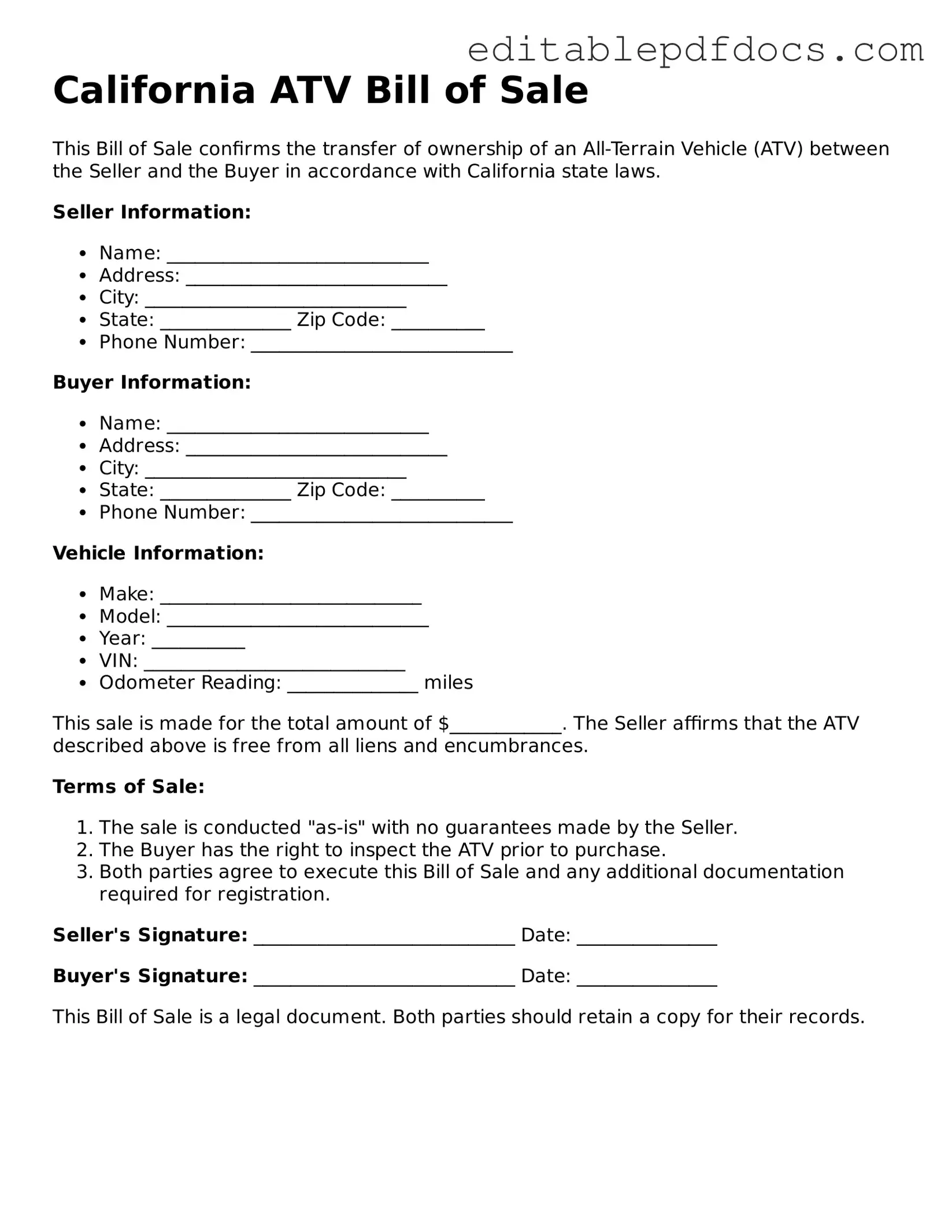Filling out the California ATV Bill of Sale form can be straightforward, but many people make common mistakes that can lead to issues down the line. One frequent error is failing to provide accurate information about the ATV. This includes the make, model, year, and Vehicle Identification Number (VIN). Omitting or misreporting any of these details can complicate the registration process.
Another mistake is neglecting to include the purchase price. This figure is important for both the buyer and seller, as it establishes the transaction's legitimacy and can impact tax obligations. Leaving this section blank or entering an incorrect amount may raise questions during a future inspection.
People often overlook the need for both parties to sign the document. A Bill of Sale is only valid when it has the signatures of both the buyer and the seller. Without these signatures, the transaction may not be legally recognized, which can lead to disputes later.
Additionally, many individuals fail to date the form. A date is crucial as it marks the official transfer of ownership. If a dispute arises, having a clear date can help clarify when the transaction took place.
Some sellers mistakenly think they can use a generic Bill of Sale template without modification. While templates can be helpful, they must be tailored to meet California's specific requirements. Failing to do so can result in an invalid document.
Another common oversight is not providing a clear description of any included accessories or equipment. If the sale includes items like helmets, trailers, or other gear, these should be listed. This prevents misunderstandings about what is included in the sale.
People also sometimes forget to provide identification information for both parties. Including driver's license numbers or other identifying information can help verify identities and protect against fraud.
Lastly, some individuals do not keep a copy of the completed Bill of Sale. Retaining a copy is essential for both the buyer and seller. It serves as proof of the transaction and can be useful if questions arise in the future.
